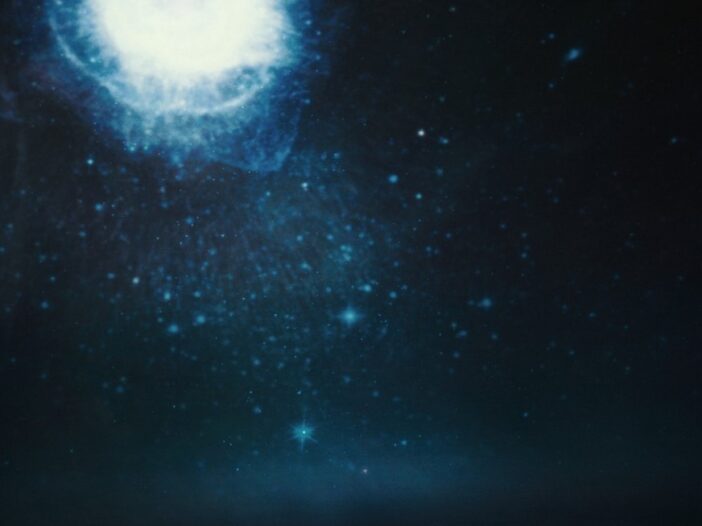
Since the dawn of time, people have looked to the skies, tracking movements of heavenly bodies to glean information from them.
We still do the same. One hundred years ago, we first glimpsed galaxies beyond the Milky Way. Today’s newest giant telescopes promise to shatter the limits of our sight and imagination. Interestingly, the COVID-19 pandemic has spawned unprecedented sales of telescopes.
Three weeks ago (Nov. 9–13), you could see seven planets in one day. Venus and Mercury were bright spots in the predawn sky. Mars, Jupiter, Neptune and Saturn were readily visible at night. It was an unusual phenomenon, but it barely registered a blip in the news.
Most people missed it.
They either weren’t looking for it, or they were caught up in the turmoil of current events.
Déjà vu
The same thing happened in the first century. Virtually everyone missed seeing the star that heralded Christ’s birth. People either weren’t looking for it or were caught up in the crush of Roman rule.
Only two isolated groups of people saw the star: societal outcasts (shepherds) and foreigners (the Wise Men).
Eyes to see
In the first century, only five planets, all visible to the naked eye, were known and studied. In most cultures, priests were the most learned astronomers or astrologers.
What would you do if you suddenly saw something infinitely brighter and closer to earth than anything you’d ever seen? The main character in my book New Star scrambles to learn everything he can about it. No other culture notes such a phenomenon. But a few Jewish holy texts predict something that seems to match it.
Much ado still surrounds what the Wise Men saw. One enduring theory is that it was a conjunction—planets or planets and stars aligned so they look like one entity. An early conflict in my book occurs when my main character refutes others’ challenges to what he saw, including the conjunction theory. That pits the Wise Man against his Council, religious and governmental powers.
Another problem the Wise Men faced was how elusive the star was. Read Matthew 2:9-11 closely and you’ll see the star didn’t guide them throughout their journey. It appeared to them once—while they were in their homeland at the time of Christ’s birth. It didn’t appear again until almost two years later when they were within a few miles of Bethlehem. How did the Wise Men justify the time and cost to pursue something they weren’t sure they’d see again?
How should we respond?
It took faith for the Wise Men to embrace something radically counterintuitive and countercultural. Not just the sight of an unpredictable star but also what it represented.
Put yourself in their shoes. Would you be willing to part with your longstanding beliefs, even if it meant breaking laws concerning your country’s official religion? Could you live with practicing one thing while secretly believing another?
We all must come to terms with similar questions when we consider Christ’s birth.
It fulfilled three hundred Old Testament prophecies, all written hundreds of years before His birth. Additionally, the star wasn’t a star at all but something far more wondrous.
Both events defy human logic and demand we take a step of faith in acknowledging there is a God and He’s more … everything than we can fathom.
Training our eyes to see
Today we can easily locate the planets in our solar system because technology tells us where to focus our untrained eyes. Yet we still must look for the planets to enjoy them. The same with Christ. His Word can focus our untrained thoughts. But we must look into His Word to enjoy Christ on a personal level.
Isaiah 9:2 says, “The people walking in darkness have seen a great light.” Those prophetic words, so perfect literally and metaphorically, were penned seven hundred years before Christ’s birth. And the star of Bethlehem wasn’t a star at all. It was God’s Shekinah Glory—a visible manifestation of God pointing mankind to Christ.
The first half of Isaiah 9 contains numerous prophecies about Christ, starting with His birth: “For unto us a child is born, unto us a son is given.” Have you ever heard more wondrous words?
I pray you recapture that awe this Christmas season. Bask in the radiance of His truth. Let His love blanket you. May your heart leap with joy at the hope that came in the form of a baby. And respond with humble adoration. Hallelujah!
Never miss a post!
*****************************************
Why am I taking about Christmas before Thanksgiving? Because this year we need it. Here are a few songs/videos I’m enjoying already. I’ll post more with each December blog. Maybe some of these will become your new favorites. Enjoy!
A gift to you: uplifting music videos
Peter Hollens, The Piano Guys, and a huge choir performing something so breathtaking they didn’t list a name for it. Musically and visually beathtaking, especially the end.
Peter Hollens singing all six harmonies in his version of “Mary Did You Know”
Michael W. Smith performing “Gloria” live (with outstanding choral backup)
And this stunning reminder that hope is never chained:
Hugh Bonneville narrating the story behind “It Is Well With My Soul”—the Spafford family’s incredible faith journey, triumphs over tragedies, their humanitarian work, their legacy, and how Bethlehem figures into every part of it (includes reenactment and the Mormon Tabernacle Choir singing backgrounds—so powerful!)





So beautiful.
I pray for faith at all times.
I will work on training my eyes and heart to look in the direction of faith.
Thanks a lot for sharing
My pleasure, Paul! Glad it encouraged you!
Hope is never chained–yes! I really enjoyed this post. I’m in Canada so it arrives right on time for me and I feel ready for Christmas posts and mornings spent pondering mysteries like stars and planets and wise men. Suddenly, I want to pull out my telescope and hang out in the field behind our house. To look a little more at the stars but also to look for Christ in scripture–both in the scripture of His creation and His word. Bless you today.
That’s wonderful, Chavon! God will certainly honor your looking! (And have fun with that telescope!)
Wow! What a beautiful comparison. How easy it is for us to miss the things that truly matter and have significance. Great post!
Thank you for those kind words, Teri!
I loved that you shared so much interesting information about the star. I did not realize the Wise Men didn’t actually see it the whole time. Really shows the faith they had. This also challenged me to make sure I am keeping my own eyes open to see what God is trying to show me.
YES, faith! If the star had guided the Wise Men all the way, they wouldn’t have needed to stop in Jerusalem (and wouldn’t have tangled with Herod). It reminds me that God shows us His will step by step, not in panoramas. 🙂 If I don’t keep my eyes open, I’ll miss what He’s trying to show me.
I have always been fascinated by the stars and planets. I love how you brought this all together and connected it to what was actually happening during the time of Christ’s birth! The challenge to be counterintuitive and countercultural is so relevant for Christians today.
Thank you, Carla! Yes, Christians today are being challenged like never before to live out what many consider counterintuitive and countercultural.
Love the encouragement to “But we must look into His Word to enjoy Christ on a personal level.” such great truth and such a needed reminder!
So glad it encouraged you, Kari!
Amen. I praise God that He is the One who opens my eyes to see the wondrous things in His law.
Amen! Yes!
I always love this story! And never read about the possibility of the star not being a star. Very interesting! Have you ever read any other texts about who the Magi were? Based on the text in Psalms 72:10-11, and Isaiah 60. There are other texts that state the Wise Men were probably Zoroastrian astrologer priests were they had knowledge of astrology and prophecy. What a great post!
I’ve read thousands of pages of texts about the Magi as part of my research for my books on them. Psalm 72 and Isaiah 60 talk about kings coming from Saba (Sheba). Some interesting YouTube videos make a case for the Magi coming from Nabataea. I weighed all that before I decided where the Wise Men in my story came from. The most convincing evidence is they were from Persia, where Zoroastrianism was the official religion. In most cultures of that day, priests were the most accomplished astronomers or astrologers. Not surprisingly, my main character in the book is an astronomy guru. 🙂 And my book accounts for which Messianic prophecies the Magi did/didn’t know about. (More about that in my next blog!)
Gotta get me a telescope!! Training our spiritual eyes to see is really what we need to do if we want to REALLY see Jesus in is glory. Thank you for that important reminder…and for providing us with links to some amazing music!
So glad you enjoyed both, Summer! I fell in love with telescopes in high school. Wish I had my own!
How easy it is for us to miss what is right in front of us, especially when we are looking. I hope to live with a more expectant heart this next year. Blessings sweet sister, beautiful post!
Thank you for those kind words, Donna! Blessings on you as well!